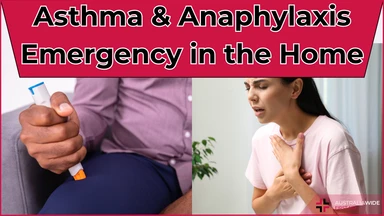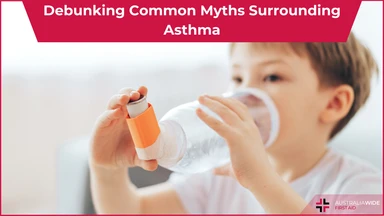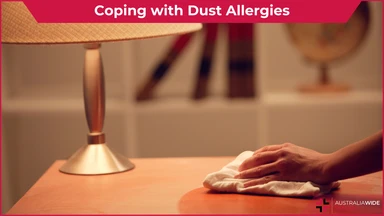Anaphylaxis Triggers: How to Avoid Them


Anaphylaxis is the most severe allergic reaction, often involving more than one body system.
The factors that cause someone to have an anaphylactic reaction are called ‘allergens’ or ‘triggers’. Anaphylaxis can quickly become life threatening. It is therefore important to know your triggers so you can effectively avoid them.

An anaphylactic reaction usually occurs within 20 minutes of exposure to a trigger. It is characterised by rapid onset of airway, breathing and/or circulation problems usually associated with skin and mucosal changes.
A variety of factors can cause this extreme allergic reaction. The most common triggers are foods, medications and venom from insect bites and stings.
The following is a list of commonly known causes of anaphylactic shock:
Allergy testing can identify and confirm your triggers. Your doctor can then give you the best advice for managing your anaphylaxis.
If you&pos;ve experienced an anaphylactic reaction from a particular type of food, you should cut that food out of your diet entirely.
Some alcoholic beverages can contain traces of allergens, such as eggs, tree nuts and seafood. If you are unsure about a certain drink, call the manufacturer to determine whether it is safe for you to have.
The majority of allergic reactions to bites and stings are from ants, bees and wasps. If you are allergic to insect bites you should:
If you have an allergic reaction to an insect sting or tick bite, you should immediately and carefully remove the sting or tick. Immediately administer an adrenaline auto-injector shot and call Triple Zero (000) emergency.
Some medications contain substances that can cause life-threatening anaphylactic reactions. Over-the-counter, prescribed medications, and herbal medicines can all be triggers for anaphylaxis sufferers.
Avoid allergic reactions to medications by:
Anaphylaxis is a serious medical condition and the best way to avoid it is to follow an anaphylaxis management plan and to always carry an adrenaline auto-injector device, such as an Epipen or Anapen.
Your anaphylaxis management plan needs to be tailored to your particular allergens. This can be done with the help of an allergy specialist. This action plan will contain information about what to do in an anaphylactic emergency.
You should know your plan from memory but also carry it with you so other people can access it in an emergency.
If you are responding to a person showing symptoms and signs of anaphylaxis, follow these steps:
For more information read DRSABCD for life support.
If you want a more in-depth look at anaphylaxis at home or in the workplace, our online courses are the answer. You can complete them at your work desk or from the comfort of your own home, and get a Certificate of Completion to show your employer, add to your resume, or simply give you the peace of mind knowing you can actually help in an emergency. Our Anaphylaxis First Aid provides learners with the knowledge needed to recognise, respond to, and manage allergic reactions and anaphylaxis.
If you're after workplace-specific information, our Workplace Anaphylaxis Risk Management course covers responsibilities and best practices for managing anaphylaxis risk in workplaces. Alternatively, our Workplace Asthma and Anaphylaxis Management and First Aid course teaches the essential knowledge and practical tools to identify, manage, and respond to asthma and anaphylaxis risks in workplace settings.

October 2, 2013
In an asthma or anaphylaxis emergency you should know the symptoms, remove triggers, and know how to respond. Read on to understand these important aspects in the context of such an emergency.

May 7, 2024
Asthma, a chronic respiratory condition affecting millions worldwide, is often shrouded in myths and misconceptions. Despite how common it is, there is a distinct lack of common knowledge. This is leading to potential mismanagement and unnecessary anxiety for those living with asthma.

February 19, 2024
For many Australians, our city and outdoor lifestyles come with a hidden challenge – dust allergies. Dust mites, pollen, and other airborne particles can trigger allergic reactions, affecting a significant portion of the population.